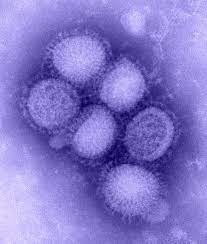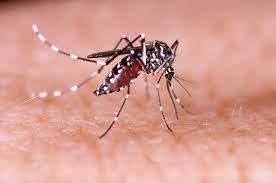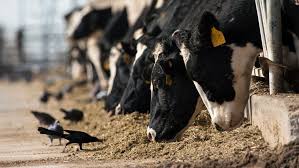
Description of the Situation
Since mid-October 2023, the World Health Organization (WHO) has been monitoring data from Chinese surveillance systems that have been showing an increase in respiratory illness in children in northern China.
At a press conference on 13 November 2023, China’s National Health Commission reported on a nationwide increase in the incidence of respiratory diseases, predominantly affecting children. Chinese authorities attributed this increase to lifting of COVID-19 restrictions and the arrival of the cold season, and due to circulating known pathogens such as influenza, Mycoplasma pneumoniae, respiratory syncytial virus (RSV), and severe acute respiratory syndrome coronavirus 2 (SARS-CoV-2). Mycoplasma pneumonia and RSV are known to affect children more than adults.
On 22 November 2023, WHO identified media and ProMED reports about clusters of undiagnosed pneumonia in children’s hospitals in Beijing, Liaoning and other places in China. Through the International Health Regulations mechanism, WHO made an official request to China to provide additional epidemiologic and clinical information, as well as laboratory results from these reported cases and data about recent trends in circulating respiratory pathogens. A key purpose was to identify whether there have been “clusters of undiagnosed pneumonia” in Beijing and Liaoning as referred to in media reports, and if so whether these were separate events, or part of the known general increase in respiratory illnesses in the community. WHO further reached out through clinical networks for additional information.
On 23 November, WHO held a teleconference with Chinese health authorities from the Chinese Center for Disease Control and Prevention and the Beijing Children’s Hospital, facilitated by the National Health Commission and the National Administration of Disease Control and Prevention, in which the requested data were provided, indicating an increase in outpatient consultations and hospital admissions of children due to Mycoplasma pneumoniae pneumonia since May, and RSV, adenovirus and influenza virus since October. Some of these increases are earlier in the season than historically experienced, but not unexpected given the lifting of COVID-19 restrictions, as similarly experienced in other countries. No changes in the disease presentation were reported by the Chinese health authorities. Chinese authorities advised that there has been no detection of any unusual or novel pathogens or unusual clinical presentations, including in Beijing and Liaoning, but only the aforementioned general increase in respiratory illnesses due to multiple known pathogens. They further stated that the rise in respiratory illness has not resulted in patient loads exceeding hospital capacities.
The Chinese authorities advised that, since mid-October, enhanced outpatient and inpatient surveillance has been implemented for respiratory illnesses covering a broad spectrum of viruses and bacteria, including, for the first time, Mycoplasma pneumoniae. This complements existing respiratory surveillance mechanisms and may have contributed to the observed increase in detection and reporting of respiratory illness in children.
Public Health Response
Since mid-October, in addition to enhancing disease surveillance in health care facilities and community settings, Chinese authorities have stressed the need to strengthen the capacity of the health system to manage patients. China has systems in place to capture information on trends in influenza, influenza-like illness (ILI), RSV and SARS-CoV-2, pneumonia and other severe acute respiratory infections (SARI), and reports influenza detections to platforms such as the Global Influenza Surveillance and Response System (GISRS). GISRS is led by WHO and used for the international virological and epidemiological surveillance of human influenza.
WHO is closely monitoring the situation and is in close contact with national authorities in China. WHO will continue to provide updates as warranted.
WHO Risk Assessment
In the current outbreak of respiratory illness, the reported symptoms are common to several respiratory diseases and, as of now, at the present time, Chinese surveillance and hospital systems report that the clinical manifestations are caused by known pathogens in circulation. Mycoplasma pneumoniae is a common respiratory pathogen and a common cause of paediatric pneumonia, and is readily treated with antibiotics.
China has an influenza-like illness (ILI) and severe acute respiratory infections (SARI) sentinel surveillance system. Since mid-October, China has implemented enhanced surveillance systems for respiratory illness covering a broad spectrum of respiratory viruses and bacteria, including Mycoplasma pneumoniae.
There is limited detailed information available to fully characterize the overall risk of these reported cases of respiratory illness in children. However, due to the arrival of the winter season, the increasing trend in respiratory illnesses is expected; co-circulation of respiratory viruses may increase burden on health care facilities.
According to surveillance data reported to WHO’s FluNet and published by the National Influenza Centre in China, ILI was above usual levels for this time of year and increasing in the northern provinces. Influenza detections were predominantly A(H3N2) and B/Victoria lineage viruses.
WHO Advice
Based on the available information, WHO recommends that people in China follow measures to reduce the risk of respiratory illness, which include recommended vaccines against influenza, COVID-19 and other respiratory pathogens as appropriate; keeping distance from people who are ill; staying home when ill; getting tested and medical care as needed; wearing masks as appropriate; ensuring good ventilation; and practicing regular handwashing.
WHO does not recommend any specific measures for travellers to China. In general, persons should avoid travel while experiencing symptoms suggestive of respiratory illness, if possible; in case of symptoms during or after travel, travellers are encouraged to seek medical attention and share travel history with their health care provider.
WHO advises against the application of any travel or trade restrictions based on the current information available on this event.
Further Information
- ProMed article. Undiagnosed pneumonia – China: Promed Post – ProMED-mail (promedmail.org)
- WHO statement on reported clusters of respiratory illness in children in northern China: WHO statement on reported clusters of respiratory illness in children in northern China
- Data and commentary from Press Conference of National Health Commission, 13 Nov 2023 http://www.nhc.gov.cn/xcs/s3574/202311/0807e750e6cc4a81a22b6d881913cf5d.shtml
- Data on SARS-CoV-2 and influenza from China https://www.chinacdc.cn/jkzt/crb/zl/szkb_11803/jszl_13141/202311/t20231110_270578.html
Citable reference: World Health Organization (23 November 2023). Disease Outbreak News; Upsurge of respiratory illnesses among children in northern China. Available at: https://www.who.int/emergencies/disease-outbreak-news/item/2023-DON494











